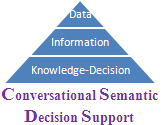
Remote servers - Status Summary
http://javaschool.com
Databases Health and Performance | Health of Application Services
Web Cluster Monitoring | ESB Cluster Monitoring | Message Queue Cluster Monitoring
Databases Health and Performance | Health of Application Services
Web Cluster Monitoring | ESB Cluster Monitoring | Message Queue Cluster Monitoring
http://itofthefuture.com
Databases Health and Performance | Health of Application Services
Web Cluster Monitoring | ESB Cluster Monitoring | Message Queue Cluster Monitoring
Databases Health and Performance | Health of Application Services
Web Cluster Monitoring | ESB Cluster Monitoring | Message Queue Cluster Monitoring
http://internettechnology.us
Databases Health and Performance | Health of Application Services
Web Cluster Monitoring | ESB Cluster Monitoring | Message Queue Cluster Monitoring
Databases Health and Performance | Health of Application Services
Web Cluster Monitoring | ESB Cluster Monitoring | Message Queue Cluster Monitoring
http://dabhand.biz
Databases Health and Performance | Health of Application Services
Web Cluster Monitoring | ESB Cluster Monitoring | Message Queue Cluster Monitoring
Databases Health and Performance | Health of Application Services
Web Cluster Monitoring | ESB Cluster Monitoring | Message Queue Cluster Monitoring
http://ituniversity.us
Databases Health and Performance | Health of Application Services
Web Cluster Monitoring | ESB Cluster Monitoring | Message Queue Cluster Monitoring
Databases Health and Performance | Health of Application Services
Web Cluster Monitoring | ESB Cluster Monitoring | Message Queue Cluster Monitoring
http://captureknowledge.org
Databases Health and Performance | Health of Application Services
Web Cluster Monitoring | ESB Cluster Monitoring | Message Queue Cluster Monitoring
Databases Health and Performance | Health of Application Services
Web Cluster Monitoring | ESB Cluster Monitoring | Message Queue Cluster Monitoring
http://tellastory.us
Databases Health and Performance | Health of Application Services
Web Cluster Monitoring | ESB Cluster Monitoring | Message Queue Cluster Monitoring
Databases Health and Performance | Health of Application Services
Web Cluster Monitoring | ESB Cluster Monitoring | Message Queue Cluster Monitoring
http://bestinusa.org
Databases Health and Performance | Health of Application Services
Web Cluster Monitoring | ESB Cluster Monitoring | Message Queue Cluster Monitoring
Databases Health and Performance | Health of Application Services
Web Cluster Monitoring | ESB Cluster Monitoring | Message Queue Cluster Monitoring
http://captureknowledge.org
Databases Health and Performance | Health of Application Services
Web Cluster Monitoring | ESB Cluster Monitoring | Message Queue Cluster Monitoring
Databases Health and Performance | Health of Application Services
Web Cluster Monitoring | ESB Cluster Monitoring | Message Queue Cluster Monitoring
 In the semantically rich environment, there is no need for complex management tools.
The names and messages are self-explanatory and directly tied to the ontological execution model. For example, service names and operations can be consistently composed with the Actor, Action, and Object vocabulary.
In the semantically rich environment, there is no need for complex management tools.
The names and messages are self-explanatory and directly tied to the ontological execution model. For example, service names and operations can be consistently composed with the Actor, Action, and Object vocabulary.
 It is also one of the areas with the great potential to decrease cost and cut extra layers. We will cut down the need for the magic of writing monitoring scripts. Application messages can instruct applications on self-checking and self-healing.
It is also one of the areas with the great potential to decrease cost and cut extra layers. We will cut down the need for the magic of writing monitoring scripts. Application messages can instruct applications on self-checking and self-healing.